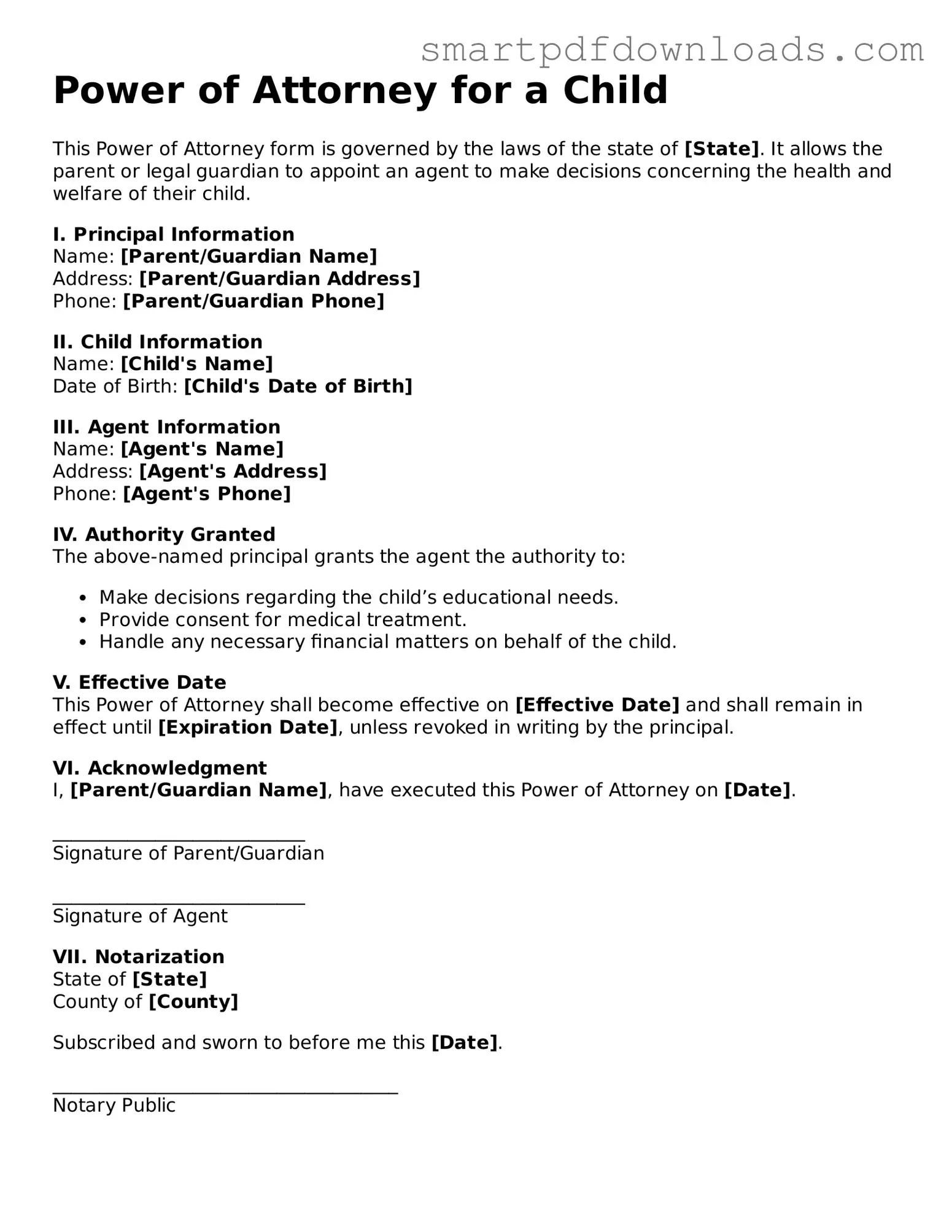Power of Attorney for a Child
This Power of Attorney form is governed by the laws of the state of [State]. It allows the parent or legal guardian to appoint an agent to make decisions concerning the health and welfare of their child.
I. Principal Information
Name: [Parent/Guardian Name]
Address: [Parent/Guardian Address]
Phone: [Parent/Guardian Phone]
II. Child Information
Name: [Child's Name]
Date of Birth: [Child's Date of Birth]
III. Agent Information
Name: [Agent's Name]
Address: [Agent's Address]
Phone: [Agent's Phone]
IV. Authority Granted
The above-named principal grants the agent the authority to:
- Make decisions regarding the child’s educational needs.
- Provide consent for medical treatment.
- Handle any necessary financial matters on behalf of the child.
V. Effective Date
This Power of Attorney shall become effective on [Effective Date] and shall remain in effect until [Expiration Date], unless revoked in writing by the principal.
VI. Acknowledgment
I, [Parent/Guardian Name], have executed this Power of Attorney on [Date].
___________________________
Signature of Parent/Guardian
___________________________
Signature of Agent
VII. Notarization
State of [State]
County of [County]
Subscribed and sworn to before me this [Date].
_____________________________________
Notary Public
